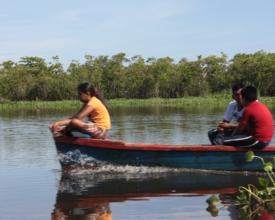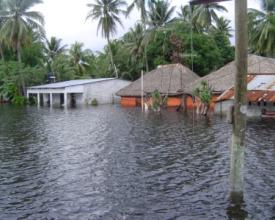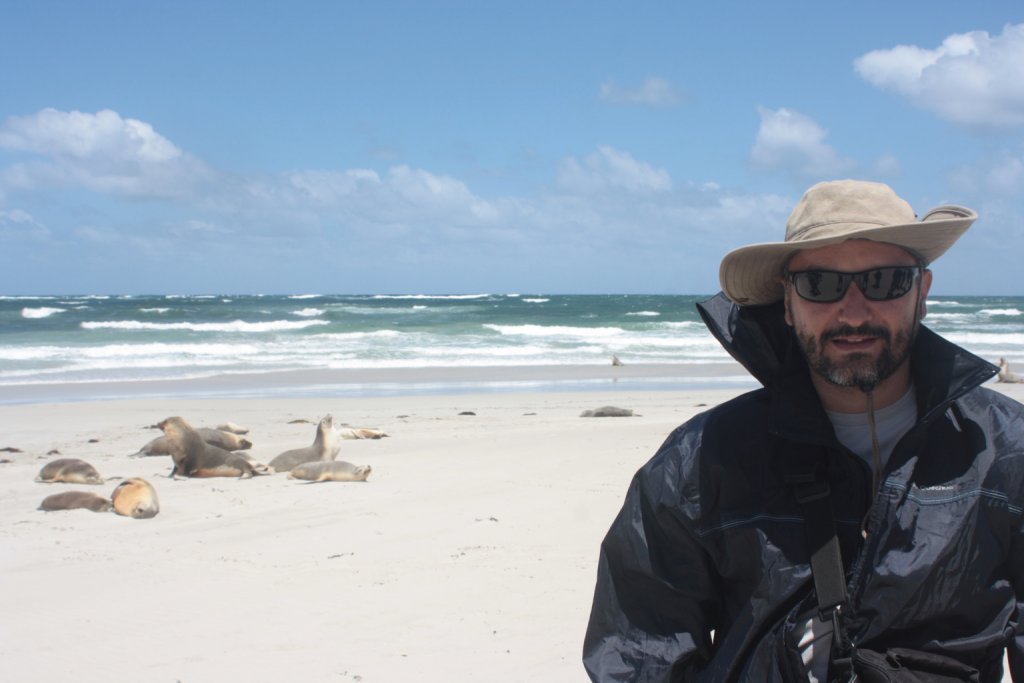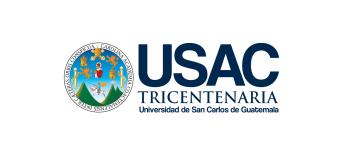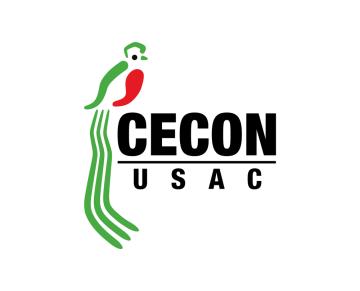
Conectar una reserva costera con su entorno
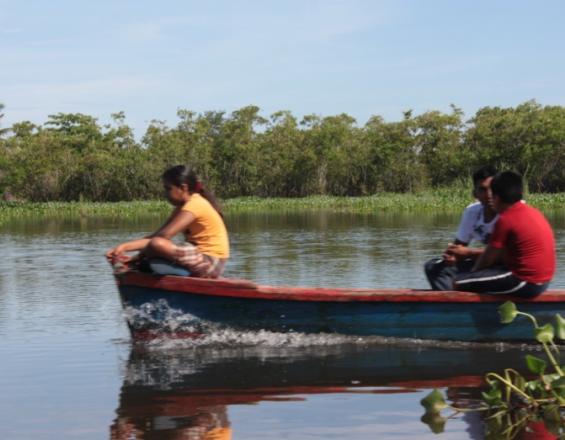
"Conectando una Reserva Costera con su Entorno" es un proceso que está abordando el problema de las inundaciones dentro de la Reserva Natural de Usos Múltiples de Monterrico en beneficio de los habitantes de la Reserva, a través del compromiso y la inclusión de nuevas partes interesadas, ampliando el alcance de la gestión y estableciendo una nueva escala de acciones.
Contexto
Défis à relever
Los retos que la solución pretende abordar son
- Efectos negativos de las inundaciones sobre los ecosistemas y los asentamientos humanos dentro de la Reserva.
- Alteraciones en las cuencas hidrográficas y sus efectos en los humedales costeros.
- Gestión de alcance limitado que pasa por alto las conexiones entre la Reserva y su entorno.
Ubicación
Procesar
Resumen del proceso
El primer paso consiste en entender las relaciones entre el área protegida y su entorno y comprender la escala en la que los ecosistemas, los procesos, los factores de cambio y los factores de estrés tienen lugar dentro y fuera del área protegida (Modelo Ecológico Conceptual). A partir de esta comprensión, es posible que la escala de acciones y el ámbito de gestión del área protegida no sean suficientes para asegurar su viabilidad a largo plazo. Si este es el caso, se necesita una nueva escala y un ámbito de gestión más amplio para el área protegida. En segundo lugar, una vez adoptada una nueva escala y un alcance más amplio de las acciones de gestión, también es necesario determinar todas las partes interesadas en ella, y comprometerlas en un proceso permanente de participación. Por último, la nueva escala de gestión, la ampliación del alcance de la gestión y la nueva configuración de las partes interesadas deben reconocerse formalmente en la gestión del área protegida, lo que significa que deben incluirse en su nivel más alto de planificación (su plan de gestión).
Bloques de construcción
Modelo ecológico conceptual de la Reserva de Monterrico
El Modelo Ecológico Conceptual (MEC) de la Reserva se creó mediante un enfoque participativo con el objetivo de comprender las interacciones entre la Reserva y su entorno, concretamente los procesos que vinculan los ecosistemas, las especies y los valores de conservación dentro de la Reserva, y reconocer las condiciones en las que esos procesos podrían cambiar y afectar a los valores de conservación dentro de la Reserva.
Factores facilitadores
- Disponibilidad de la información.
Lección aprendida
- Durante la elaboración de la CGE y con los resultados que surgieron durante esta fase, fue evidente que la escala actual de acciones que se llevan a cabo sólo dentro de la Reserva no será suficiente para abordar los problemas de inundaciones en la zona.
Proceso permanente de participación de las partes interesadas
Conscientes de la importancia de involucrar a todas las partes interesadas, se estableció un proceso permanente de participación con el objetivo de involucrar a las partes interesadas que actualmente no participan en la gestión de la Reserva y que deben ser incluidas para cumplir con la nueva escala de acciones sugeridas por la CGE de la Reserva. Estas partes interesadas incluyen, entre otros, los ingenios azucareros, la Secretaría General de Planificación y los gobiernos locales de las cuencas hidrográficas.
Factores facilitadores
Los factores favorables han sido:
- Se conoce la escala efectiva de gestión del área protegida.
- Se identifican las partes interesadas que afectan al área.
- Voluntad de los gestores del área protegida de implicar a las partes interesadas.
- Capacidad de la institución encargada de la gestión del área protegida para generar un interés generalizado entre las distintas partes interesadas.
- Las partes interesadas se comprometen a participar activamente en el proceso.
-
Gran concienciación pública sobre los valores (económicos y no económicos) de la Reserva.
Lección aprendida
Importantes actores que afectan a la Reserva quedaron relegados en el actual esquema de gobernanza, por lo que es necesaria la inclusión de nuevos actores que se adecuen a la nueva escala de actuaciones.
Actualización del Plan Director de la Reserva
Factores facilitadores
Lección aprendida
Impactos
Durante este proceso en curso, se han logrado resultados intermedios para la gestión de la Reserva: a) nueva escala de las acciones de gestión; b) acuerdos de gobernanza más amplios; y c) mayor alcance de la gestión. Además, algunos impactos iniciales de este proceso son: a) Los gestores de la Reserva y los habitantes han adquirido una mejor comprensión de la magnitud y la escala del problema de las inundaciones dentro de la Reserva. b) El proceso puso de relieve la necesidad de llevar a cabo acciones de conservación fuera de la Reserva para mantener la integridad del ecosistema y controlar las inundaciones que se producen dentro del área protegida.
Beneficiarios
Los principales beneficiarios de esta solución son
- Habitantes de la Reserva de Monterrico
- Personas que dependen de las actividades económicas que se desarrollan en la zona, principalmente el turismo y la pesca.
Objetivos de Desarrollo Sostenible
Historia
Los habitantes de Monterrico, afectados continuamente por inundaciones, han percibido un incremento en la intensidad y frecuencia de las mismas; considerando esto, como consecuencia de las alteraciones de la cuenca hidrográfica realizadas por los ingenios azucareros. En busca de una forma de enfrentar esta problemática, los pobladores solicitaron a la Universidad de San Carlos de Guatemala (USAC) intermediar en este tema y tratar de encontrar una solución compartida; esto, debido a que la Universidad a través del Centro de Estudios Conservacionistas (CECON) es la institución encargada de la gestión de la Reserva y por ello es una institución pública altamente reconocida a nivel nacional. Para ello, el CECON organizó una serie de recorridos de campo a lo largo de toda la cuenca en los que participaron importantes actores para entender las causas detrás de los problemas de inundaciones, como un elemento importante en el proceso de construcción de un Modelo Ecológico Conceptual, con el objetivo de dejar en claro todas aquellas interrelaciones clave entre la Reserva y su entorno. La comprensión de estas interrelaciones llevó también a entender que trabajar sólo dentro de la Reserva no sería suficiente para tratar eficazmente los problemas de las inundaciones. Por lo tanto, se consideró la posibilidad de ampliar el área de trabajo; sin embargo, un área más grande también significaba que sería necesario coordinar y trabajar junto con otras partes interesadas, no tenidas en cuenta en la gestión actual de la Reserva. De la misma manera, durante este proceso se consideró que todos esos conocimientos adquiridos debían ser incorporados a la gestión de la Reserva, y la mejor manera de hacerlo sería incluyéndolos en la herramienta de planificación más importante de la Reserva, su Plan Director. De ahí que se iniciara el proceso de actualización del actual Plan Director, que aún continúa, y que pretende establecer una nueva escala de actuaciones, un ámbito de gestión más amplio y un nuevo esquema de gobernanza, que reconozca su entorno.

